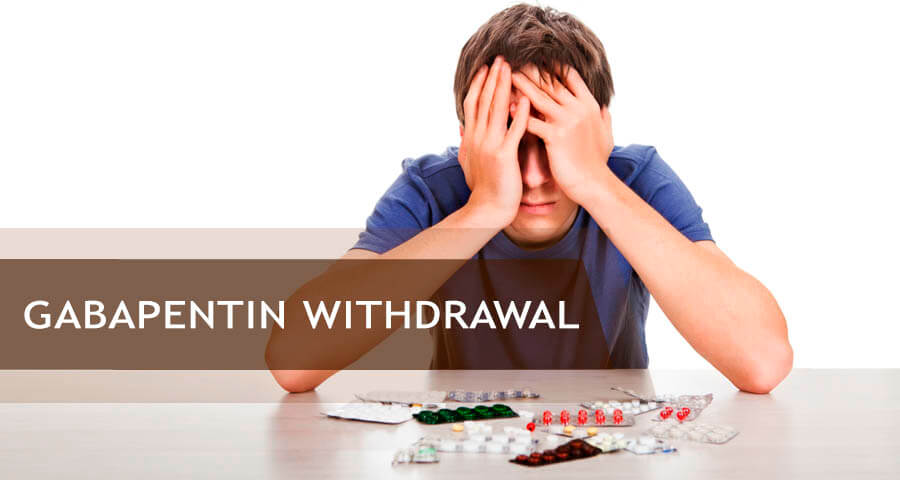
Gabapentin, or Neurontin, is a prescription drug used primarily to treat epilepsy patients.
There are also cases in which this drug, categorized as an anticonvulsant medicine, is administered as an initial treatment to provide relief for patients suffering from health conditions like neuropathic pain, such as diabetic neuropathy, central neuropathic pain, and post-herpetic neuralgia. Post-herpetic neuralgia can last for months after a patient suffers from shingles. It is also given as part of medication treatment for individuals with cases of restless leg syndrome, insomnia, and bipolar disorder.
Table Of Contents:
It works by reducing unusual brain activity. That is why it is so versatile in its use because different disorders or illnesses involve just such brain abnormalities. Its effect on unusual brain activity can also prevent seizures, as well as alter the way the brain responds to pain information. This medication can come in different forms such as capsules, tablets, or an oral solution.
It is entirely possible to develop an addiction to this medication. It can result in Gabapentin abuse. Attempts to stop the use of this drug once addiction develops can result in gabapentin withdrawal.
Even in individuals who use it exactly as prescribed, a physical dependence can still arise. This demonstrates how cautious one needs to be with the use of this medication. It is also important to understand that there is a great chance of getting an overdose on gabapentin.
How to Stop Gabapentin Use
For many addicts, there is a point where they realize that they need to get themselves together and stop.

Stopping gabapentin isn’t entirely straightforward due to the way the medication works in the brain. Two methods can be used to stop taking this drug. These are the Cold Turkey method and Tapering.
Cold Turkey
Stopping a drug cold turkey refers to abruptly stopping its use, regardless of the regularly used dosage. It takes dedication to stop taking a drug cold turkey, but it can also be very dangerous with the wrong medication, such as this one.
This can cause increased severity and quicker onset of these symptoms, as well as additional health complications such as prolonged seizures.
This method is not recommended by health professionals due to the complications that may arise.
Tapering
This is the preferable method of weaning off gabapentin. Tapering involves a gradual reduction of the dosage at regular intervals. This is intended to give the body and brain time to adjust to the absence of the drug which it had become used to. This reduces the severity of signs and can help avoid significant side effects of Gabapentin.
No patient should ever risk stopping this medication without properly informing their doctor. Any changes in the dosage regimen should only be made after the patient is reviewed by the doctor.
What Happens When the Drug is Suddenly Stopped?
Research information shows that cessation of this medication can result in any of the following features:
- Return of seizures, neuropathic pain, or symptoms for which prescribed, which may be worse than before
- Withdrawal symptoms, such as anxiety and insomnia
- Arrhythmias
- Confusion
- Status epilepticus
- Catatonia
- Fatigue
What Are Gabapentin Withdrawal Symptoms?
Chronic use of this medication may cause physical dependence. When the drug is stopped, the body finds it difficult to adjust to the changes made by long-standing use of this drug. This results in gabapentin withdrawal symptoms, including the following:
- Restlessness
- Confusion
- Agitation
- Anxiety
- Headache
- Insomnia
- Palpitations
- Excessive sweating (diaphoresis)
- Tremors
- Increased blood pressure (hypertension)
- Increased heart rate (tachycardia)
- Abdominal pain
Withdrawal Timeline
The half-life of Gabapentin is the important point that helps to be prepared when one should expect the manifestation of the withdrawals. The withdrawal symptoms began to take effect in a person undergoing recovery within 12 hours to 7 days of stopping the medicine intake.

The withdrawal timeline of this drug according to case studies of several cases is as followed:
Signs common in the first 12-48 hours:
- Anxiety
- Insomnia
- Fatigue
- Palpitations
- Sweating
- Nausea
- Itchy skin
- Headaches
These are mild initial symptoms of withdrawal.
Symptoms after 48 hours (Day 3):
- Restlessness
- Disorientation
- Confusion
- Agitation
- Anxiety
These features are usually slightly more intense and consistent than the ones experienced in the initial two days.
Days 4-5:
- Increasing confusion, agitation, and anxiety
- Headaches
- Light sensitivity
- Nervousness
What Are the Factors That Affect Withdrawal?
There are several factors that affect the duration of time that withdrawal symptoms last, as well as the time of onset and intensity of the features, including the following:
- The dosage used: When an individual takes a higher dosage on average, the body is more acclimated to higher levels of this substance. When the drug is stopped suddenly, symptoms are more severe or take longer to resolve completely.
- Any other drugs abused: People who abuse this drug are likely to abuse it alongside opioids. This can make the withdrawal period more stressful, particularly if the information regarding other drugs is not available to the clinicians.
- The duration of abuse: Individuals who have been abusing this drug for a longer period of time are similarly acclimated to the drug. Signs will be similarly difficult to cope with.
- Psychological co-morbidities: When there is an accompanying mental illness, gabapentin withdrawal symptoms can be harder for the individual to deal with, and can be more unpredictable.
- The method of quitting: Gabapentin withdrawal always occur as the result of an individual voluntarily stopping gabapentin. For addicts who can no longer get their dose, and for people who voluntarily stop abruptly, they are both using the cold turkey method, for which symptoms hit a lot more viciously. Tapering is better to reduce the impact of these signs.
- The physiological makeup of the individual: Every patient is different, so it is hard to predict an exact profile of clinical features. The physiology and health of each individual addict can alter how symptoms develop.
Gabapentin Detox
There is no absolute cure for addiction to any drug. Every addict will need to go through a period of withdrawal when trying to quit.
However, detox is a process that will make this period a lot more bearable.
This will not speed up gabapentin withdrawal, but by taking care of the addict, usually in an inpatient setting in a treatment center, the patient can be made more comfortable with the minimization of these symptoms.

This involves consistent monitoring of the vital signs of the patient in the center, with medication given to manage symptoms. Outpatient detox is available, giving addicts flexibility, but access to the outside world increases the chances of relapse. However, to quit this medication permanently, is medical detox all that is needed?
The consistent use of this drug, even when legitimately prescribed, can result in gabapentin withdrawal when stopped. Tapering is the preferable means to quitting gabapentin, as opposed to cold turkey. However, whether an individual stops the medication and the method they use to do this, is ultimately up to the doctor. The symptoms for which it was prescribed, such as seizures or pain, can return if the drug is quit injudiciously. This is why all patients should be reviewed by their doctors before attempting to stop. Stopping this medication requires not just medical detoxification, but a determination to reach full recovery on the side of the addict.
Page Sources
- Raymond F, Anton et al, Gabapentin combined with naltrexone for the treatment of alcohol dependence, 2011, https://pubmed.ncbi.nlm.nih.gov/21454917/
- Raymond F, Anton et al, Gabapentin combined with naltrexone for the treatment of alcohol dependence, 2011, https://pubmed.ncbi.nlm.nih.gov/21454917/
- Parth T, Sarbajit S, Doren W, Leigh H, National Admissions to Substance Abuse Treatment Services, 2002-2012, https://www.samhsa.gov/data/sites/default/files/2002_2012_TEDS_National/2002_2012_Treatment_Episode_Data_Set_National_Body.htm
- Mersfelder TL, Nichols WH, Gabapentin: Abuse, Dependence, and Withdrawal, 2015, https://journals.sagepub.com/doi/10.1177/1060028015620800
- Yesil B, Elbozan HB, Gabapentin withdrawal in a depressed patient: A case report, 2016, https://www.researchgate.net/publication/304709125_Gabapentin_withdrawal_in_a_depressed_patient_A_case_report
- Bonnet U, Banger M, Leweke FM. Treatment of acute alcohol withdrawal with gabapentin; results from a controlled two-center trial, 2003, https://pubmed.ncbi.nlm.nih.gov/14520131/
- Barrueto F, Green J, Howland MA, Hoffman RS, Nelson LS, Gabapentin withdrawal presenting as status epilepticus, 2002, https://pubmed.ncbi.nlm.nih.gov/12507063/
- Rosebush PI, MacQueen GM, Mazurek MF, Catatonia following gabapentin withdrawal, 1999, https://pubmed.ncbi.nlm.nih.gov/10211925/
- Corá-Locatelli G, Greenberg BD, Martin JD, Murphy DL, Rebound psychiatric and physical symptoms after gabapentin discontinuation, 1998, https://psycnet.apa.org/record/1998-01353-007
- Tran KT, Hranicky D, Lark T, Jacob NJ, Gabapentin withdrawal syndrome in the presence of a taper, 2005, https://pubmed.ncbi.nlm.nih.gov/15898970/
- Hellwig TR, Hammerquist R, Termaat J, Withdrawal symptoms after gabapentin discontinuation, 2010, https://academic.oup.com/ajhp/article-abstract/67/11/910/5130783?redirectedFrom=fulltext
- Finch CK, Eason J, Usery JB, Gabapentin withdrawal syndrome in a post-liver transplant patient, 2010, https://pubmed.ncbi.nlm.nih.gov/20718643/


 Reviewed by:
Reviewed by:  Written by:
Written by: 

 FindTreatment.gov
FindTreatment.gov